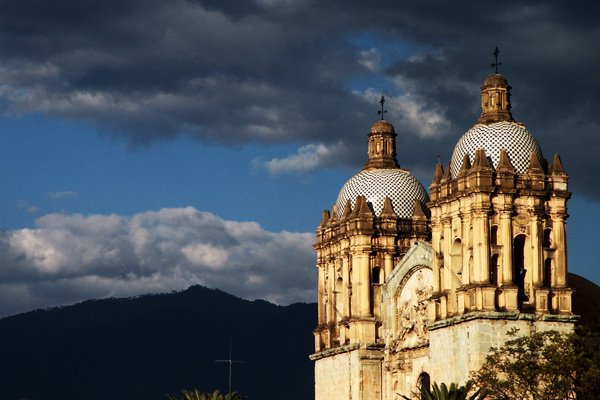
Almost every aspect of the wedding was different in terms of what I was used to, so there is plenty that I don't understand. Some traditions are complex with lots of connecting threads which one probably has to be a Zapotec to completely grasp. One is those is the concept of the
guelaguetza, which in the traditional sense, relates to different ways of paying off social debts. The word means reciprocal exchanges of gifts and services.
When a couple gets married, they receive everything they need to pursue a happy and productive life, land, house, car, furniture, appliances, food, services, everything. In turn, they also incur debt as they are obligated to return the favors when others get married. The parents of the bride, who have been married for over thirty years are still collecting on promises of food and services, promised at their wedding. It is a system based on shared wealth, debt and labor.

At any rate, Enrique and Fermina received a roomful of gifts and the bride's family is responsible for all of them.


The groom's family provides other things, but all the gifts come from the bride's side.

The day before the wedding, at two in the afternoon, led by a band,

the couple arrives at the bride's house after parading through the village.

They are accompanied by a contingent of men from the groom's family, who arrive in trucks. As in every part of the multi-day event, there is a formal presentation and blessing.

Here, Enrique's father, makes a presentation after which, the couple receives a blessing from everyone individually.


The gifts are loaded onto the trucks and taken to the groom's house.





The couple is, once again, led by the band through the village back to Enrique's house.

The gifts are assembled in front of the compound and there are more speeches and blessings.

The couple receives multiple blessings and congratulations from each and every person, men and women forming separate lines.


Mezcal and beer are essential and important part of these blessings.
A key element in the gifts is the baúl, which is a small chest or armoire. That's it, the carved piece in the center.

Perhaps the idea of a dowry or bridal trousseau might fit in. It is filled with bread,
pan de yema, and chocolate to be distributed the day after the wedding to insure good luck and blessings. I could be wrong on all of this, but that's the impression I got.
The baúl was heavy! They struggled to get it on the truck. After, the formal reception of the gifts, a miniature baúl was tied to little Antonino's back.

He is one of the bride's nephews. He carried water and the herb we were constantly receiving,
te de poleo, and then proceeded to dance with another of his aunts, I think,

Here's a video, a sweet moment.





























































